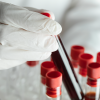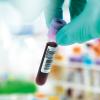Why does “wrong blood in tubes” happen and what can be done? Rachel Moss looks into the situation.

It’s that sinking feeling in the middle of a busy shift in the transfusion laboratory when the analyser throws up that the group of the sample being processed does not match the historical group of the patient.
That sinking feeling where you know somewhere, somehow, a patient has been compromised by this error – and it means someone, somewhere, is going to need to be re-bled. Wrong blood in tubes (WBITs).
It’s that sinking feeling of knowing that you now have to sort it out, update the laboratory information system (LIMS), spend time trying to find the patient, find the person who made the error as well, ask for a repeat sample, photocopy the request form and the sample bottle, and contact the Transfusion Practitioner so it can be investigated. And it was all going so well…
So, why do WBITs happen? Have you ever asked yourself why they can’t just bleed the right patient? Of course, to err is human, and a straw poll of clinical colleagues to ask why mistakes happen throws up a number of reasons familiar to many of us – competing priorities, system failures, human failures, external pressures, managing emergencies, new ways of doing things, changing environments. Reasons we have all considered when thinking about why something went wrong.
However, the cause of adverse events is multi-factorial and rooted in the fact that healthcare is a complex system of different people, with different priorities, using a number of different IT systems, working with a number of different skill sets, all with one focus – the patient.
Tales to tell
Ask any Transfusion Practitioner to list their latest WBITs and they will all have a few tales to tell. There is the FY1, Dr S, who after a 12-hour shift was still on the ward as Dr B, the night FY1, was in the emergency department (ED), trying to admit patients onto an already full acute medical ward. When asked to take admission bloods from the “new patient, bed 3, as Dr B is still in ED” Dr S took them to help his colleague and then went back to the computer to print off the request forms and label the samples.
Or the Band 7 Nursing Sister who was admitting the day case cardiac angiogram list and, with the patients arriving before the Ward Clerk and not yet admitted on the system, thought she’d get ahead and take the admission bloods. But with no wristband or request forms available, they couldn’t be correctly labelled.
Or the Surgical Registrar who had to take samples from an upset emergency patient whose first language was not English, and so just asked if they were called so-and-so, and as the patient nodded through her tears, took blood samples. All these resulted in a WBIT.
Clinical knowledge
So do our clinical colleagues know what to do? A recent piece of work undertaken at a London teaching hospital shows they do. They were asked a number of questions about WBITs and the answers in the main showed people do know.
One question, for example, asks for five statements to be rated in order of priority (1 being the most important, and 5 being the least important).
- The patient must be comfortable before the blood sample is taken.
- The patient must be positively identified before taking the blood sample.
- The patient must understand the reason for the blood sample being taken.
- The patient details on the request form must be correct.
- The patient must be wearing a wristband.
I’m sure everyone would agree that “b” is the most important, as this is the critical part in the sample-taking process; 60% of respondents (doctors and nurses) thought so. But as a patient? Is it not more important you understand the reason for the sample being taken, and that you are comfortable? If you are managing this situation, would they not be the two most important things?
In another question, true-or-false statements were asked:
- The blood sample bottle can be labelled away from the patient, so long as it is labelled from the request form and not the patient notes.
- If the information written on the sample bottle matches the Cerner printed wristband, the information on the request form doesn’t have to match up.
- If a Cerner sample label is printed for blood transfusion samples, it must not be used and the sample must be handwritten.
- If there is no wristband in place, the blood sample can still be taken, providing the patient can state their name and date of birth.
- The sample bottle should be labelled after the blood sample has been taken from the patient, not before.
When these questions were posed to two different groups of biomedical scientists (mixed grades) as part of the London Regional Transfusion Committee BMS Empowerment days, they caused a great deal of discussion, with no consensus on some of the statements and questions.
“Human factors in healthcare” is now part of the management vocabulary and can be described as “enhancing clinical performance through an understanding of the effects of teamwork, tasks, equipment, workspace, culture, organisation on human behaviour and abilities, and application of that knowledge in clinical settings.”
In essence, addressing all those factors contributing to mistakes happening (competing priorities, system failures, and so on).
One way to look at human factors is by using a framework, such as the SHEEP model, which helps consider all the contributing factors:
- Systems: Culture, IT systems, information flow, organisation flow, improvement models
- Human interaction: team dynamics, conflict, leadership, behaviours of others, communication
- Equipment: equipment failures, lack of consumables, user issues, non-consumables (analysers, monitors)
- Environment: location, interruptions, physical, safety, ergonomics
- Personal: external influences, problems based on who you are, pathology, physiology, attitudes, behaviour, emotion.
Other considerations when reviewing the topic of WBITs include barriers to help prevent the error happening. This was clearly shown in the Swiss Cheese model, which illustrates the levels of defence, and considers active errors, latent conditions and the fact that when the holes line up, mistakes can happen.
Examples of barriers in sample taking may include the use of bedside PDAs to scan wristbands and print the sample label in real-time. Or the two-sample rule, which ensures the patient does not receive an incorrect ABO blood component based on the risk the first sample taken might be a WBIT.
There is no magic solution to prevent WBITs. If there was, every Transfusion Practitioner in the land would have adopted it. The well-worn path of up-to-date policies, comprehensive training and education, patient identification awareness campaigns (for staff and patients) and ongoing incident reporting, both locally and externally, to Serious Hazards of Transfusion (SHOT), remain our best weapons.
However, next time you get a WBIT in the laboratory, just remember that a long list of contributing factors may have led to it happening. Then start updating the LIMS, finding the patient, finding the person who made the error, asking for a repeat sample…
Rachel Moss is a Transfusion Practitioner at Great Ormond Street Hospital for Children NHS Foundation Trust, London.




